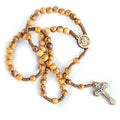Holy Land's Status Quo & Immovable Ladder on Church of the Holy Sepulchre

The Holy Land, a term that evokes a deep sense of reverence and history, is a place where the physical and spiritual merge, offering a unique narrative of faith, conflict, and coexistence. At the heart of this narrative is the Church of the Holy Sepulchre, a revered site believed to encompass both the location of Christ's crucifixion and the tomb from which He rose again. Amidst the sacred aura that envelops this ancient church, an intriguing symbol of the delicate balance of power and tradition stands: the Immovable Ladder. This seemingly ordinary wooden ladder, resting against a window ledge of the church, serves as a poignant emblem of the "Status Quo," a complex set of regulations governing the shared custody of the holy sites. This article delves into the significance of the Immovable Ladder and the broader implications of the Status Quo in the Holy Land.
The Enigma of the Immovable Ladder
The Immovable Ladder, seemingly inconspicuous, carries a weight far beyond its physical presence. It has remained in virtually the same position since the 18th century, a testament to the intricate agreement among the Christian communities—Catholic, Greek Orthodox, and Armenian Apostolic—who serve as custodians of the church. The ladder symbolises the principle of the Status Quo, which dictates that nothing within the holy sites can be altered without consensus among the communities. This principle extends to the minutest details, including the position of a ladder, underscoring the profound commitment to maintaining harmony and respect among the diverse Christian traditions in the Holy Land.

The Genesis of the Status Quo
The Status Quo agreement, formalised in the 19th century, was the result of centuries of rivalry and conflict among Christian denominations for control over the Holy Land's sacred sites. The Ottoman Empire, which ruled over Jerusalem at the time, sought to quell these disputes by imposing a framework that would freeze the existing arrangements, thus giving birth to the Status Quo. This historic decree has since been upheld by successive rulers, including the British Mandate authorities and the modern state of Israel, ensuring the preservation of a delicate balance amidst the ever-evolving political landscape of the region.
The Significance of Shared Custody
The shared custody of the Church of the Holy Sepulchre, as dictated by the Status Quo, is a remarkable example of interdenominational cooperation and mutual respect. It allows for the peaceful coexistence of different Christian traditions within the same sacred space, each with its own rituals and liturgies. This arrangement reflects the broader ethos of the Holy Land as a mosaic of religious and cultural identities, striving for harmony in a land all too familiar with conflict.
While the Status Quo has largely succeeded in maintaining peace among the Christian denominations, it has not been without its challenges. Disputes occasionally arise, often over seemingly minor issues that symbolise deeper historical grievances. The Immovable Ladder itself has sometimes been at the center of these controversies, serving as a reminder of the ongoing need for dialogue and compromise in the Holy Land.
The Role of the Holy Land in Interfaith Dialogue
The concept of the Holy Land transcends geographical boundaries, embodying a spiritual homeland for Christians, Jews, and Muslims alike. The Status Quo of the Christian holy sites serves as a microcosm for the larger quest for peace and understanding in the region. By fostering a spirit of cooperation and mutual respect, the custodians of the Holy Land can offer a beacon of hope for interfaith dialogue and coexistence worldwide.
The holy land - The Future of the Status Quo
As the Holy Land continues to navigate the complexities of modernity and conflict, the future of the Status Quo remains a subject of contemplation and debate. While some advocate for reforms to address practical concerns and evolving realities, others caution against any changes that could upset the longstanding balance. What remains clear is the enduring significance of the Holy Land as a sacred space where history, faith, and politics intersect in profound ways.
Conclusion:
The Immovable Ladder and the Status Quo in the Holy Land offer a fascinating glimpse into the intricate web of tradition, faith, and diplomacy that defines this sacred region. As a symbol of unity amidst diversity, the ladder invites us to reflect on the broader implications of coexistence and mutual respect in a world often divided by differences. In the land of the holy, where the past and present converge, the ladder stands as a silent witness to the enduring quest for harmony and understanding among the faithful.
SHARE:





















